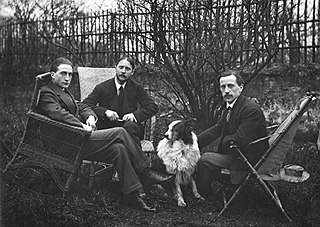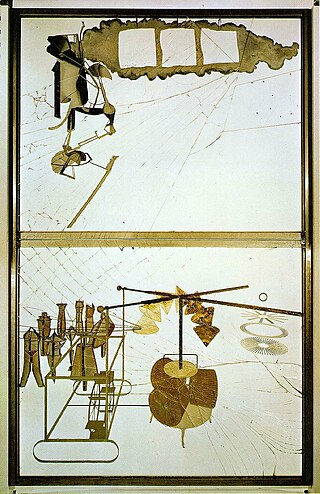Mircea Cantor | |
|---|---|
| Born | 1977 |
| Nationality | Romanian |
| Known for | Video, Animation, Sculpture, Photography, Drawing, Painting, Conceptual Art |
| Awards | Marcel Duchamp Prize, 2011 Ricard Prize, 2004 |
Mircea Cantor (born 1977) is a Romanian-born artist who follows in the tradition of French artist Marcel Duchamp in that he employs readymade objects. [1] Cantor's choice of media is diverse, in that he has employed video, animation, sculpture, drawing, painting, and Installation art in his work. [2]
Cantor's 2005 video work, "Deeparture", which was on view in the contemporary galleries at The Museum of Modern Art, features a deer and a wolf together in a pristine white box environment. Cantor's work is included in The Museum of Modern Art, [3] the Walker Art Center, [4] The Philadelphia Museum of Art, Centre Pompidou, The Israel Museum, Museo Nacional Centro de Arte Reina Sofía, Abteiberg Museum, Magasin 3, as well as in other collections worldwide. He was awarded with the Ricard Prize in 2004; in 2011, he won Best Dance Short Film at the Tiburon International Film Festival with Tracking Happiness. In 2011, he received the Marcel Duchamp Prize.[ citation needed ] He was named an Officier in Ordre des Arts et des Lettres in 2019.

Henri-Robert-Marcel Duchamp was a French painter, sculptor, chess player, and writer whose work is associated with Cubism, Dada, and conceptual art. He is commonly regarded, along with Pablo Picasso and Henri Matisse, as one of the three artists who helped to define the revolutionary developments in the plastic arts in the opening decades of the 20th century, responsible for significant developments in painting and sculpture. He has had an immense impact on 20th- and 21st-century art, and a seminal influence on the development of conceptual art. By the time of World War I, he had rejected the work of many of his fellow artists as "retinal", intended only to please the eye. Instead, he wanted to use art to serve the mind.

Francis Picabia was a French avant-garde painter, writer, filmmaker, magazine publisher, poet, and typographist closely associated with Dada.

Jacques Villon, also known as Gaston Duchamp, was a French Cubist and abstract painter and printmaker.

Raymond Duchamp-Villon was a French sculptor.

The Musée Rodin of Paris, France, is an art museum that was opened in 1919, primarily dedicated to the works of the French sculptor Auguste Rodin. It has two sites: the Hôtel Biron and surrounding grounds in central Paris, as well as just outside Paris at Rodin's old home, the Villa des Brillants at Meudon, Hauts-de-Seine. The collection includes 6,600 sculptures, 8,000 drawings, 8,000 old photographs and 7,000 objets d'art. The museum receives 700,000 visitors annually.

Marcel Dzama is a contemporary artist from Winnipeg, Manitoba, Canada who currently lives and works in New York City. His work has been exhibited internationally, in particular his ink and watercolor drawings.

The Bride Stripped Bare by Her Bachelors, Even, most often called The Large Glass, is an artwork by Marcel Duchamp over 9 feet (2.7 m) tall and almost 6 feet (1.76m) wide. Duchamp worked on the piece from 1915 to 1923 in New York City, creating two panes of glass with materials such as lead foil, fuse wire, and dust. It combines chance procedures, plotted perspective studies, and laborious craftsmanship. Duchamp's ideas for the Glass began in 1912, and he made numerous notes and studies, as well as preliminary works for the piece. The notes reflect the creation of unique rules of physics, and myth which describes the work.

Fountain is a readymade sculpture by Marcel Duchamp in 1917, consisting of a porcelain urinal signed "R. Mutt". In April 1917, an ordinary piece of plumbing chosen by Duchamp was submitted for the inaugural exhibition of the Society of Independent Artists, to be staged at the Grand Central Palace in New York. When explaining the purpose of his readymade sculpture, Duchamp stated they are "everyday objects raised to the dignity of a work of art by the artist's act of choice." In Duchamp's presentation, the urinal's orientation was altered from its usual positioning. Fountain was not rejected by the committee, since Society rules stated that all works would be accepted from artists who paid the fee, but the work was never placed in the show area. Following that removal, Fountain was photographed at Alfred Stieglitz's studio, and the photo published in the Dada journal The Blind Man. The original has been lost.

Nude Descending a Staircase, No. 2 is a 1912 painting by Marcel Duchamp. The work is widely regarded as a Modernist classic and has become one of the most famous of its time. Before its first presentation at the 1912 Salon des Indépendants in Paris it was rejected by the Cubists as being too Futurist. It was then exhibited with the Cubists at Galeries Dalmau's Exposició d'Art Cubista, in Barcelona, 20 April – 10 May 1912. The painting was subsequently shown, and ridiculed, at the 1913 Armory Show in New York City.
Sherrie Levine is an American photographer, painter, and conceptual artist. Some of her work consists of exact photographic reproductions of the work of other photographers such as Walker Evans, Eliot Porter and Edward Weston.

Thomas Hirschhorn is a Swiss artist who lives and works in Paris.

Pierre Bismuth is a French artist and filmmaker based in Brussels. His practice can be placed in the tradition of conceptual art and appropriation art. His work uses a variety of media and materials, including painting, sculpture, collage, video, architecture, performance, music, and film. He is best known for being among the authors of the story for Eternal Sunshine of the Spotless Mind (2004), for which he won the Academy Award for Best Original Screenplay alongside Michel Gondry and Charlie Kaufman. Bismuth made his directorial debut with the 2016 feature film Where is Rocky II?.

The Société Normande de Peinture Moderne, also known as Société de Peinture Moderne, or alternatively, Normand Society of Modern Painting, was a collective of eminent painters, sculptors, poets, musicians and critics associated with Post-Impressionism, Fauvism, Cubism and Orphism. The Société Normande de la Peinture Moderne was a diverse collection of avant-garde artists; in part a subgrouping of the Cubist movement, evolving alongside the so-called Salon Cubist group, first independently then in tandem with the core group of Cubists that emerged at the Salon d'Automne and Salon des Indépendants between 1909 and 1911. Historically, the two groups merged in 1912, at the Section d'Or exhibition, but documents from the period prior to 1912 indicate the merging occurred earlier and in a more convoluted manner.

Saâdane Afif is a French conceptual artist.

Les Peintres Cubistes, Méditations Esthétiques, is a book written by Guillaume Apollinaire between 1905 and 1912, published in 1913. This was the third major text on Cubism; following Du "Cubisme" by Albert Gleizes and Jean Metzinger (1912); and André Salmon, Histoire anecdotique du cubisme (1912).
Camille Henrot is a French artist who lives and works in Paris and New York.
Latifa Echakhch is a Moroccan-French visual artist. Working in Switzerland, she creates installations. She participated in the Venice Biennale in 2011 and won the Marcel Duchamp Prize in 2013.

Joana Hadjithomas and Khalil Joreige are Lebanese filmmakers and artists. Their work includes feature and documentary films, video and photographic installations, sculpture, performance lectures and texts.
Clément Cogitore is a French contemporary artist and filmmaker. Combining film, video, installations and photographs, Cogitore questions the modalities of cohabitation between humankind and its own images and representations.
Enrique Ramírez is a Chilean artist born in 1979 in Santiago de Chile.